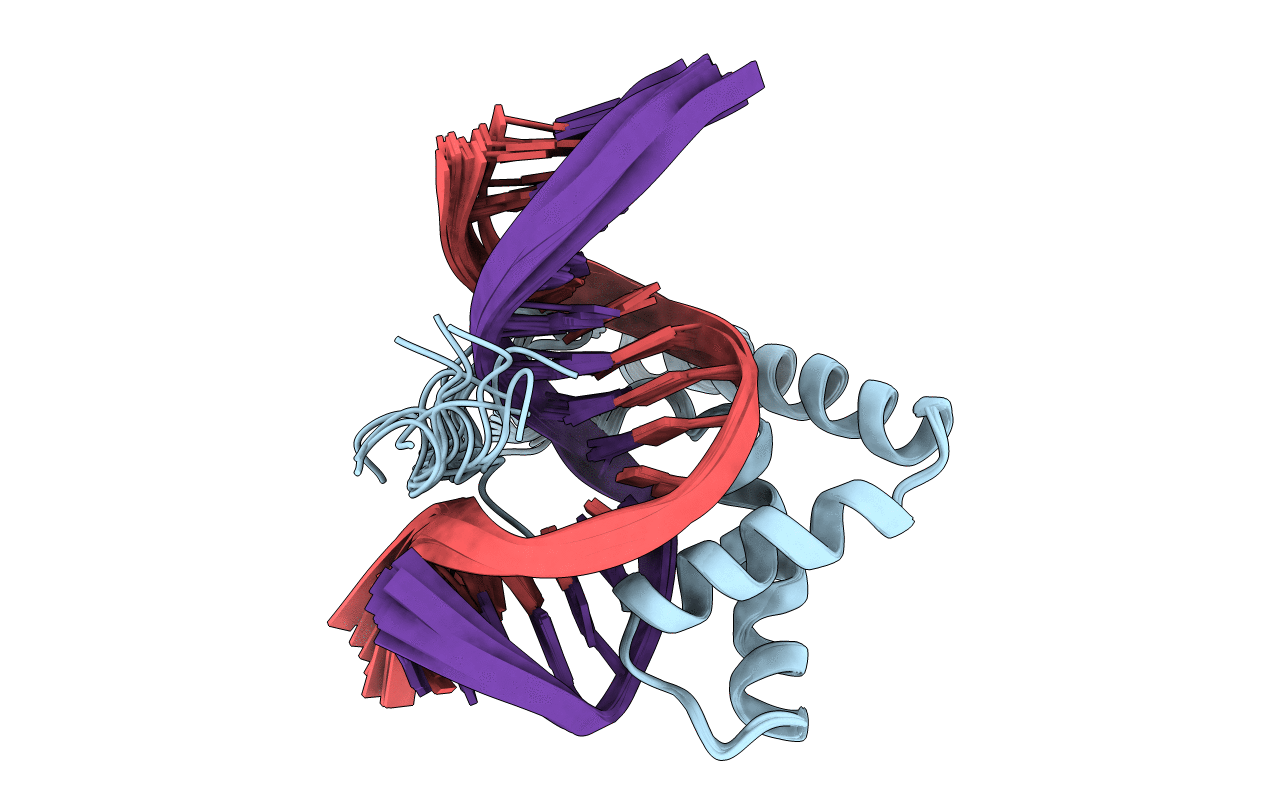
Deposition Date
1998-10-13
Release Date
1998-10-21
Last Version Date
2023-12-27
Entry Detail
PDB ID:
2LEF
Keywords:
Title:
LEF1 HMG DOMAIN (FROM MOUSE), COMPLEXED WITH DNA (15BP), NMR, 12 STRUCTURES
Biological Source:
Source Organism:
Mus musculus (Taxon ID: 10090)
Host Organism:
Method Details:
Experimental Method:
Conformers Calculated:
28
Conformers Submitted:
12
Selection Criteria:
CONSTRAINTS VIOLATION, AMBER ENERGIES


